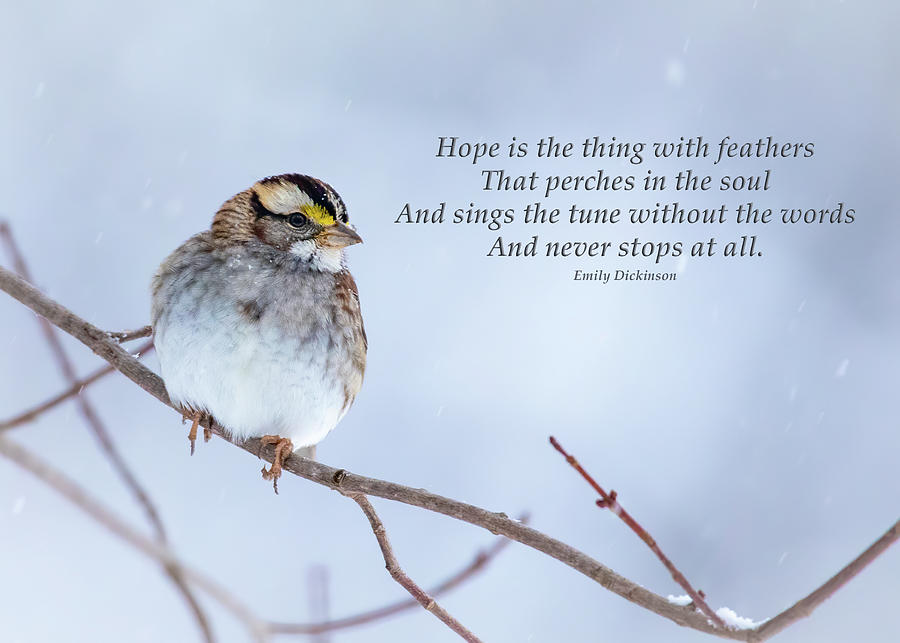It’s 2021: Now What?
How to Manage Until Things Get Better
By Fran Bieganek, MS, LP, BCN

It’s January, 2021 and we are now facing the reality that we were hanging onto the idea that when 2020
was over we could all breathe a sigh of relief. How often did you hear yourself or someone else say, “I
can’t wait until 2020 is over!”? But, as we turn the corner into 2021 we are all realizing that the relief we
had been hoping for, the hope we had been planning on may not be realized just yet. We are still
waiting – for vaccinations to reach us, for hugs to feel safe, for jobs to be reinstated, for social
gatherings to be safe and sanctioned, for restaurants to open, for malls to feel safe, for weddings to be
celebrated, for grocery-runs to not be riddled with anxiety, for talks with neighbors to feel natural and
safe, for Covid casualty numbers to reduce – and most of all we are waiting for….hope.
According to the American Psychological Association the definition of hope is having an expectation that
something good will happen in the future or that something bad won’t happen. Hope is a necessary
component in our capacity to tap into our resilience. Hope is needed to help us face adversity and rise
up in the midst of it. As we start January, 2021 we, both individually and collectively, find ourselves in
search of this hope.
There are lots of things I could say in this article about what hope is and the psychological, physical,
emotional and spiritual benefits of being hopeful. But, to be honest, most of us have limited bandwidth
right now. So, I will limit the rest of this article to sharing a list of ways to find hope amidst extraordinary
challenge. The list is derived from research on how evidence-based cognitive, behavioral and spiritual
practices impact an individual’s state of being. My wish is that this list will give you a sense of agency to
develop a cycle of hope that will carry you through these next several months.
Hope-building Strategies:
1. Allow yourself to acknowledge it is difficult to feel hopeful.
2. Decide you want to be hopeful. When you do you are more likely to find hope.
3. Identify at least one source of hope – for example, a belief system or an experience you had that
left you hopeful, if even momentarily. If you can’t find one look to your family, friends, or larger
culture for inspiration here. Do they have a story of hope you can share in or through which you
can vicariously feel hopeful?
4. Find a cause you’re interested in. Helping others can increase your own sense of hope.
5. Help someone else find hope and meaning. Listen to them, support them, encourage them. This
can help to inspire hope in you.
6. Find hope within the stories that people tell you of the hardships they’ve faced, within your
spiritual faith, within inspiring quotes, epic books, uplifting music, and unforgettable movies that
leave you feeling upbeat.
7. Allow yourself to notice your small place in the larger community. What small role can you have
in bringing positivity to your circle and to the larger community? For example, how do you
influence your community in your role as a parent, a caregiver, a neighbor, etc.?
8. Keep a routine of self-care. Routine helps you to experience a sense of control over your
circumstances, which can feel hopeful.
9. Make a list of those things you can control/of places in your life where you feel a sense of
agency. Identifying where you can exert influence in your life will encourage a hopeful attitude.
Examples might include such things as how you schedule your day, organizing your home, how
you spend your free time.
10. Identify and reframe negative thought patterns. For example, if you find yourself thinking “the
effects of this pandemic are too much for me to take” try changing your thought to “we’re all in
this together.” This will help you feel less alone or isolated, and in turn help you feel more
hopeful.
11. For 10 minutes, make a choice to intentionally think about positive things and notice how this
helps you to have a more positive mindset.
12. When something goes well or great this week, intentionally practice remembering the positive
experience. Focus on a few key details of this experience: notice what you are feeling; notice
your relationship to the people around you or the place of the experience; notice the meaning
you ascribe to this positive experience.
13. Engage in honest, authentic connections: regular check-ins with those that can be active
listeners, be honest in your reflection of your situation, be open and vulnerable in
conversations. This type of interaction can help you find coping mechanisms and meaning.
14. Consider starting your own virtual support group.
15. Imagine how life will be better this time next year.
16. Focus on the things for which you are grateful.
17. Make a list of your past successes – realizing you’ve already overcome challenges will bolster
hope.
18. Make a list of your strengths, skills and abilities – this will remind you that you are more capable
than you are giving yourself credit for in the moment.
19. Make a list of the resources you currently have on hand – this will be a nice reminder that you
have options and tools.
20. Spend 5 minutes each morning visualizing what life will look like for you, for your family, for
your neighbors, for your co-workers, for your community, for all people when things are better.
There’s no question that for the majority of us weariness from a year of monumental challenges has set
in by now and this can make life seem so much more difficult. Yet hope does not have to be elusive to
us. We can make the choice to work on developing, nurturing and maintaining hope. In doing so, we
empower ourselves and strengthen our resolve to persevere and grow during these challenging times.
“Hope is the thing with feathers
That perches in the soul
And sings the tune without the words
And never stops at all.”
Emily Dickinson

Recent Comments